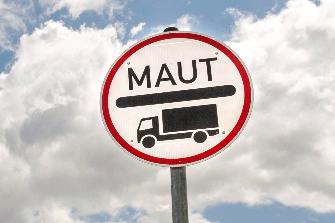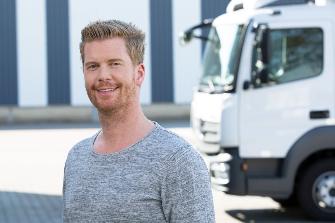General information
-
The federal government has strict requirements with regard to the toll system in Germany.
The toll system must:
- Be able to detect a defined toll road network (around 13,000 kilometres of motorways and 38,000 kilometres of federal trunk roads), and only calculate the toll for these roads. It must be possible to extend this road network at any time;
- Take the CO2-emission class, Euro emission class, axle class and weight class of the truck into consideration when calculating the fee;
- Provide a technological framework that will allow the introduction of additional fee classes, such as time and location of journey;
- Be a "free-flow" system that calculates the toll without stoppages or traffic jams;
- Be a dual system that offers both automatic and manual log-on procedures, thus ensuring that all truck drivers can use the toll road network without discrimination;
The toll system should also provide the technological capability to support other European systems.
With its automatic log-on option, which is based on innovative Global Positioning System (GPS) and mobile radio technologies, and its manual system based on the app and online access, the Toll Collect system fulfils all of these requirements.
-
The toll system calculates and collects the fees based on the distance travelled - in contrast to how vignettes work. The system also guarantees that the flow of traffic is not impeded during toll collection. Unlike most conventional systems, Toll Collect does not require vehicles to reduce their speed, stop or stay within prescribed lanes.
As a dual system, the toll system also provides two ways to log on: automatic log-on via the On-Board Unit and manual log-on via the app or online.
The automatic log-on system is based on an innovative combination of mobile radio technology (GSM) and a GPS satellite positioning system (Global Positioning System). The core element of the automatic log-on is an On-Board Unit (OBU), which determines the position of the truck and the distance it has travelled using satellite signals and other positioning sensors. The OBU sends this journey data and vehicle-specific characteristics to the computing centre, with a time delay and under encryption. As a result, the journey data is not allocated to the toll route network until it arrives at the Toll Collect computing centre. Once this is done, the toll for the roads subject to toll is calculated in the computing centre based on the vehicle-specific characteristics.
Alternatively, Toll Collect also offers a manual log-on option, which can be used via the app or the Internet. This works in a similar way to buying a train ticket. The driver enters all the relevant vehicle data, and sets the start date, start point and destination of the journey. Based on the data entered by the driver, the route calculation takes into consideration vehicle-specific traffic restrictions, such as closures and weight restrictions.
-
More information on logging on via OBU
The easiest way for you to use the toll system is to log on automatically using an On-Board Unit (OBU) in your truck. To do this, you will need to register your company and vehicles in the Toll Collect customer portal. You will receive a confirmation of registration for each truck. Once all the vehicle data has been entered correctly, you can arrange an appointment to get an on-board unit fitted with a service partner authorised by Toll Collect.
The alternative to the automatic system is the manual log-on. This is mainly provided for truck drivers and transport companies who do not drive through Germany very often. You can log on your planned route using the Toll Collect app or online. You don't have to register to be able to log on manually.
More information:
-
The quickest and easiest way for users to register is online, using the customer portal. The registration process takes only a few minutes to complete. You will be given immediate access to all of the functions in the customer portal, such as the list of journeys still to be invoiced.
-
The vehicle registration certificate part 1 will be used in future to check that toll-related vehicle data which are not apparent from the outside, such as the emission class, Technically Permissible Maximum Laden Mass and drive type, are correct.
Based on this information, stops and official checks can be minimised.
-
TOLL2GO
The Toll Collect system is designed to provide the technical framework to support other toll systems. Toll Collect already collaborates with the Austrian toll operator ASFINAG. Register for the TOLL2GO service. Then you will only need one On-Board-Unit for toll payment in Germany and Austria – the Toll Collect On-Board Unit.
-
If your tractor unit has a Technically Permissible Maximum Laden Mass (TPMLM) of at least 7.5 t, it is subject to toll. Under 7.5 t it is toll-free.
-
Vehicle combinations with a Technically Permissible Maximum Laden Mass (TPMLM) of 7.5 tonnes or more are only subject to toll if the motorised vehicle has a TPMLM of over 3.5 tonnes. The weight prompt on the OBU at the beginning of the journey must be set to the correct weight class (< 7.5 t, ≥ 7.5 – 11.99 t, ≥ 12 – 18 t or > 18 t) and confirmed by pressing OK. The technically permissible maximum laden mass is selected in increments of 1.5 tonnes. It is not possible to set a weight class that is lower than the Technically Permissible Maximum Laden Mass that is saved in the on-board unit. Once your journey has started, the OBU display will continuously show the selected weight class. The Technically Permissible Maximum Laden Mass is determined by adding together the Technically Permissible Maximum Laden Masses of the individual vehicles.
If the vehicle is travelling without a trailer, the weight setting "< 7.5 t" should be selected before travel commences.
-
Vehicles with a particulate reduction class (PRC) will no longer be assigned to a better Euro emission class from 1 December 2023.
Vehicles with emission class 'Euro 2 + PRC 1' will now fall within toll emission class 2, rather than toll emission class 3.
For vehicles with emission class 'Euro 3 + PRC 2' the applicable category will be toll emission class 3, rather than toll emission class 4.
-
You will find the seven-digit customer number (formerly: user number), for example, on your toll statement in the top right-hand corner and on all our letters.
-
Our freephone number is available almost everywhere in the world. Only a few countries and providers do not support this service. In these cases, please dial: +49 30 25291303. Calls to this number are charged according to the conditions of your fixed-line or mobile phone provider.
-
Guide for determining the emission classes (PDF, 95 KB)
The emission class of a truck registered in Germany or abroad can be determined and verified in various ways. Detailed information on this can be found in the 'Guide for determining the emission classes' from the Federal Logistics and Mobility Office. If you have any further questions about the information provided in the brochure, please contact the Federal Logistics and Mobility Office directly, tel. +49 (0) 221-5776-0.
-
Download centre
Please let us know about any changes to your operating and vehicle data as soon as possible.
You can change your payment method in the customer portal. If the legal form of your company has changed, please notify us in writing. You will find the necessary forms in the Download Centre.
Customer portalYou can change your contact details in the customer portal, such as: address, telephone number, contact person and e-mail address. In addition, you can also deregister vehicles there and change the following vehicle data: licence plate number, emission class, number of axles, vehicle identification number, gross vehicle weight and country of registration.
-
Following your successful "user registration", you will receive your master PIN.
The master PIN is used to authenticate the registered customer. You will need it when phoning customer service and when changing your details.


